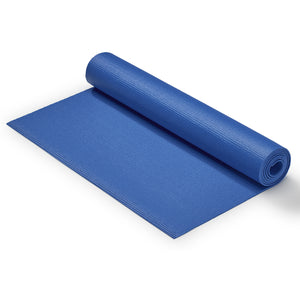It is estimated that 1 in 4 Americans have reported back pain in the last three months(1). That stat is incredibly high, and in my professional opinion, only going to increase if we continue on this course.
I recently wrote about how a sedentary lifestyle (sitting) compares to smoking in that it's linked to adverse health effects. One of these negative health effects is musculoskeletal pain. Common parts of the body for us to feel pain are the shoulders, knees, and back.
We often hear that movement is medicine, yet pain is commonly reported shortly after starting a workout routine. Let me introduce three reasons people start developing back pain and things you can start doing immediately to strengthen and protect your back, and ultimately alleviate your pain.
1. Improper Forms Cause Back Pain
Exercise is a skill, just like painting, computer coding, or driving a car with manual transmission. These skills all require practice, as it takes time to become proficient in any of these activities. With exercise, though, I find people rush and jump right into it before taking the necessary steps to practice.
Take driving a manual transmission, for example; there is no way an inexperienced driver is getting behind the wheel and driving on the road. You hopefully will learn from a professional who can teach you over a few weeks or maybe longer.
The most common reason for back pain during exercise is improper workout techniques - ranging from strength, cardio, flexibility training, to anything in between. It takes time to practice and learn the required skills of whichever discipline you are in.
In my experience, beginners or people starting something new are unaware of their hip positioning and spinal posture. This is specifically dangerous for the low back, also known as the lumbar spine because it compromises exercise technique when the spine extends or flexes past a safe amount.
Reduce Your Back Pain with Proper Form
Incorrect posture leads to improper form, which can trigger back pain. Shown here are three popular exercises performed correctly and incorrectly with overextension of the low back.
Push Up
Correct

Incorrect

Overhead Press
Correct

Incorrect

Deadlift
Correct

Incorrect

Correcting form for these and any other movement is usually a lack of awareness. Filming yourself and reviewing your form is the best way to maintain proper form and stay pain-free.
2. Weak Muscles Cause Back Pain
In any given body movement, many muscles work synergistically to perform the intended motion. Take, for instance, a squat.
The glutes, hamstrings, quads, and core are the primary muscles utilized. If some of the muscles used are weak, it leads to unoptimized movement and sometimes back pain. The glute and core muscles are essential to protecting the low back, given their function in stabilizing the spine and initiating lower body movement. The most human movement utilizes the core and glute muscles, so it is imperative not to let these muscles become inactive and weak.
Untrained muscles become weak with time and lack of movement. That is why it is crucial to be proactive with your body and dedicate time to strength training.
Alleviate Your Back Pain With Core and Glute Strength Exercises
Two simple yet highly effective exercises to help you maintain and build strength in your core and glute muscles are a plank and hip/glute bridge.
Shown here is an elbow plank with a knee tap. This is a great exercise to start building core strength and progresses into more challenging variations. Learn about what you can do to build strength with a 30-day core challenge.
Elbow Plank w/ Knee Tap

A hip bridge is a fundamental lower body strength movement and is a phenomenal way to keep the glute muscles strong and active. Because weak glute muscles contribute to back pain, practicing both variations is essential to a pain-free back.
Glute Bridge

Single-Leg Glute Bridge

3. Tight Muscles Cause Back Pain
Tight muscles are the third contributor to back pain and, in my opinion, the most frustrating to treat. Like I mentioned earlier, there are hundreds of muscles in the human body, and it can be hard to pinpoint which particular one is causing trouble.
Additionally, muscle tightness is usually caused by our lifestyle, meaning the daily tasks we perform. Breaking free from daily tasks can be challenging, especially if it is related to job function.
For example, a truck driver on the road 8 hours a day driving will have a hard time taking breaks from sitting throughout the day. Similarly, a musician who holds and plays an instrument for hours may develop tight muscles based on the posture they hold.
Ease Your Back Pain with Flexible Muscles Stretches
Identifying these trouble areas based on your specific lifestyle is valuable for staying limber. Common muscles and areas of the body that become tight are the hips, hamstrings, hip flexors, and upper back. A lack of movement cause muscles to become less flexible over time which is not ideal for exercising.
Tight muscles directly impact exercise techniques by reducing the range of motion. The low back then tries to compensate for the lack of flexibility by rounding or arching the spine and, unfortunately, gets punished.
Pain is often the result of a lack of adequate flexibility, so try these stretches if you are tight in any of these areas.
Hip Flexor Stretch

Hamstring & Hip Stretch

Upper Back

Back-pain is far too familiar to us; however, I believe it doesn't have to be. A combination of tight and weak muscles paired with comprised exercise technique are the three components that I think lead to back during or after your workout.
Try the above exercises and pointers, explore what may be causing you pain, or be proactive and stay pain-free. Strengthen and protect your body and not let pain hold you back.
(1) “Acute Low Back Pain” Center for Disease Control and Prevention, 2020, https://www.cdc.gov/acute-pain/low-back-pain/index.html. Accessed 20 August, 2021.

























Add Your Name & Email
Please enter your name and email to continue.We won’t display your email publicly.